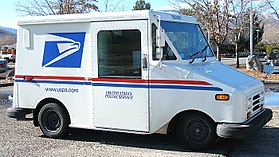Fighter Aircrafts in WW2
In new age of aerial warfare, aircrafts began to dominate the battlefield as a clear choice for quick and fast maneuvers. Along with carriers, aircrafts gave the U.S. the ability to launch transatlantic attacks. Specifically, small, compact, and maneuverable airplanes dominated naval warfare such as during the Battle of Midway.
This article will primarily focus on models of airplanes produced by Grumman Aircraft Engineering Corporation, specifically the Grumman F4F Wildcat and F6F hellcat.
 Founded in January 1930 by primarily Leroy Randle (Roy) Grumman, William T. Schwendler, and Leon A. (Jake) Swirbu, Grumman was first started in a garage in long island. They enjoyed their early success despite the Great Depression due to contracts with the military. The Grumman XF4-F or commonly referred to as the F4F or Wildcat, was created primarily due to military requests for a new carrier-based aircraft. Although a contract was at first granted to Brewster, the navy switched to the F4F due to later improvements.
Founded in January 1930 by primarily Leroy Randle (Roy) Grumman, William T. Schwendler, and Leon A. (Jake) Swirbu, Grumman was first started in a garage in long island. They enjoyed their early success despite the Great Depression due to contracts with the military. The Grumman XF4-F or commonly referred to as the F4F or Wildcat, was created primarily due to military requests for a new carrier-based aircraft. Although a contract was at first granted to Brewster, the navy switched to the F4F due to later improvements.
In fact, the F4F was a much more durable aircraft, more of which survived the initial outbreak of World War Two. It had better armor plating, self sealing fuel tanks, as well as a general ruggedness not afforded to other airplanes.
You guys might remember the folding wings from the documentary in class. In fact, that’s what prompted me to write this article because I found it so interesting. The folding wings of the F4F, officially called the STO-Wing, was and still is a technological marvel. It was the obvious answer to increasing the capacity of these carriers by conserving space. One interesting thing to note is that these STO-Wings are actually manually operated. Hydraulics were found to be too heavy so instead they resorted to a manual system with safety locks. Watch the video down below! It’s super interesting. Later on, the F4F would be superceded by the F6F Hellcat, a more capable fighter than the F4F and which what was primarily used during the second half of the Pacific War such as during the Battle of Midway
Watch me!
Now for an interesting statistic. By allowing the airplanes to fold, the capacity for these carriers increased by more than 50 percent. Without this, the U.S. may not have been able to achieve it’s naval superiority as it was. You might also remember how Mr. Stewart explained how elevators brought down these aircrafts which also allowed for massive capacity.
 One other thing you guys might find interesting. Grumman is actually the producer of the iconic USPS truck! It was created in the 1980s when post offices began searching for a reliable vehicle to deliver male. True to its name of the LLV or long life vehicle, these delivery trucks are still used today even though we had long stopped production in 1994.
One other thing you guys might find interesting. Grumman is actually the producer of the iconic USPS truck! It was created in the 1980s when post offices began searching for a reliable vehicle to deliver male. True to its name of the LLV or long life vehicle, these delivery trucks are still used today even though we had long stopped production in 1994.Hope you guys enjoyed!
Sources:

No comments:
Post a Comment
Note: Only a member of this blog may post a comment.